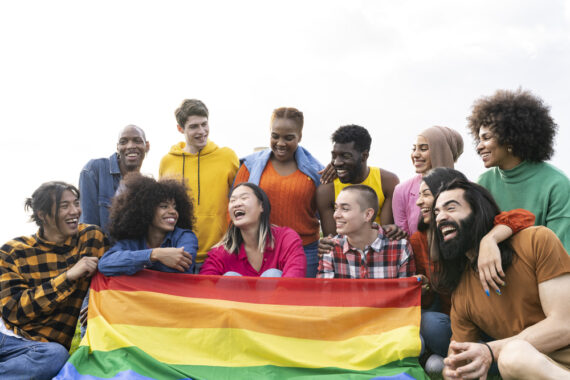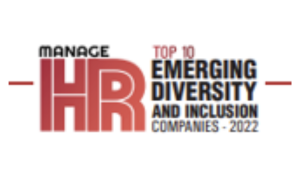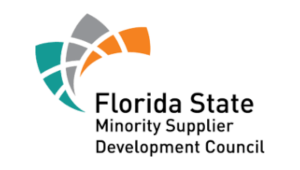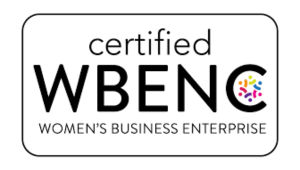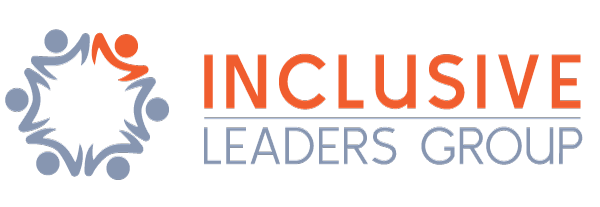During Pride Month in June, many employers take the opportunity to celebrate the LGBTQ+ community in many important and visible ways. But creating a genuinely inclusive culture means taking year-round action.
What does LGBTQ+ community refer to?
As an umbrella term, LGBTQ+ includes lesbian, gay, bisexual, transgender, and queer people. Note that more sexualities can feature under the LGBTQ+ umbrella, hence the use of the plus symbol (for example intersex people, pansexuality, asexuality, and people who are questioning their sexuality/gender identity). The LGBTQ+ umbrella is inclusive to many different sexualities and gender identities…so there many ways we can ensure LGBTQ+ people are supported and included in their workplaces.
The LGBTQ+ Community Faces Underrepresentation And Isolation
The LGBTQ+ community is underrepresented in the workplace, especially at more senior levels. As a result, many LGBTQ+ employees feel like an “only” at work and are more likely to experience microaggressions; they might feel unable to talk openly and comfortably about themselves, for example, or need constantly to correct assumptions about their personal lives. Inclusive Leaders Group team members and I see many incredible examples of members of the LGBTQ+ community thriving at work, but overall, barriers and challenges remain.
The trans community faces some of the sharpest barriers in the workplace. They’re twice as likely to hear sexist jokes about people of their gender, for example, and three times likelier to feel they can’t talk about their life outside of work. That translates into being much more likely to think about leaving their company. McKinsey research found that 21 percent of cisgender employees thought frequently about leaving their workplace; that figure rose as high as 32 percent for trans employees.

How to Support the LGBTQ+ Community At Work And Beyond
McKinsey reports that LGBTQ+ visibility has become more common in the media and across the private and public sectors in the United States in recent years. To keep up, businesses are becoming more adept at adopting inclusive-language practices and undertaking other allyship efforts to attract a more diverse workforce.
Despite this progress, there is a disconnect, as many members of the LGBTQ+ community report feeling vulnerable, underrepresented, and unable to bring their whole selves to the workplace, according to McKinsey research. And the issues that the community faces are as pressing as ever: there have recently been movements across the U.S. to limit the rights of the LGBTQ+ community and particularly those of transgender individuals.
Ensuring Workplace Inclusion for LGBTQ+ Employees
Here are some key LGBTQ+ inclusion strategies that SMEs can consider adopting for a more LGBTQ+ friendly workforce:
-
Review your policies for LGBTQ+ inclusion
Having LGBTQ+ policies in the workplace is crucial for setting the guidelines on how to be more inclusive and avoid discrimination. LGBTQ+ inclusion should be a core part of your DEI strategic plan and policy; having a separate policy for LGBTQ+ inclusion is an even clearer way to show your commitment to tackling discrimination and advancing inclusion in this area.
Also, make sure all your policies are LGBTQ+ inclusive, for example, your policies on parental leave, adoption, and pensions.
-
List your pronouns
Adding pronouns in email signatures, on social media profiles, and stating them in meetings has become much more prevalent in business and the world more generally. Clearly stating your pronouns (be they she/her, he/him, they/them, or a mixture of pronouns, such as she/they or he/they) has become a way for everyone to normalize not assuming someone’s gender. When everyone gets into the habit of stating their pronouns, this helps trans and non-binary people feel more comfortable to state theirs.
-
Incorporate gender-neutral language
Gender-neutral language avoids bias towards a particular gender. Using ‘they’ instead of ‘he/she’ in contracts and other company documentation is a good step towards this, as is monitoring ongoing communications for gender neutrality.
There are gender-neutral options, so managers can choose from a range of default gender options or add gender information for an employee. Of course, the right option should always be confirmed with the employee before setting. For more information about how to incorporate gender-neutral language into the workplace, see this guide on inclusive language from Pronouns.org.
-
Provide LGBTQ+ Inclusion Training and Development
Offering LGBTQ+ training in the workplace as part of equality and diversity training can be a powerful way to educate everyone about LGBTQ+ issues. Training helps ensure your policies are heard and understood across the organization. Plus, having a training management system in place helps you keep track of your progress. Inclusive Leaders Group offers LGBTQ+ Employee Inclusion & Retention: Professional Development Initiatives including training and team coaching.
Don’t overlook LGBTQ+ inclusion. The percentage of U.S. adults who self-identify as lesbian, gay, bisexual, transgender, or something other than heterosexual has increased to a new high of 7.1% in 2022, which is double the percentage from 2012 when Gallup first measured it.
One in five Gen Z adults identify as LGBTQ+
The best way to learn more about LGBTQ+ Inclusion Professional Development Initiatives? Let’s talk! Schedule a 30-minute consult with me so we may discuss your DEI strategy and LGBTQ+ training or coaching needs.
Download the Complimentary E-book: The CHRO’s Guide to Advancing Workplace DEIB: A Human Resource Leader’s Guide to Advancing Diversity, Equity, Inclusion & Belonging in the Workplace.
We help leaders create safe, inclusive spaces that elevate employee engagement and performance to improve the business results and the communities they serve. VISIT US
Inclusive Leaders Group LLC, (ILG) is a Certified Woman-Owned and Minority-Owned Business. ILG is a Strategic Consulting Firm Specializing in Diversity, Equity, and Inclusion as a Business Strategy.
As CEO and Principal Consultant of Inclusive Leaders Group, LLC, Charlotte Hughes MS, CDP, SHRBP, CPLP brings a diverse background as an accomplished Talent and Organizational Development and Diversity & Inclusion global thought leader and practitioner with experience serving major Fortune 100 companies and one of the largest health care systems in the U.S.

